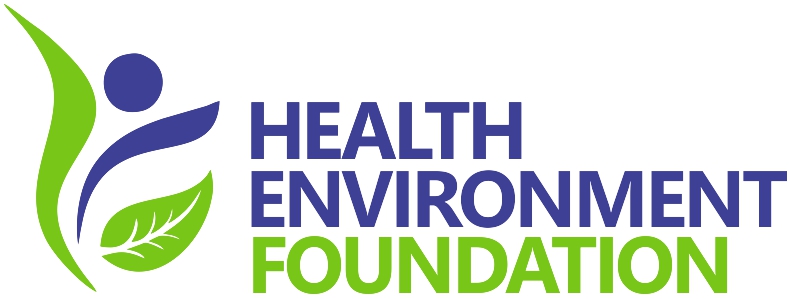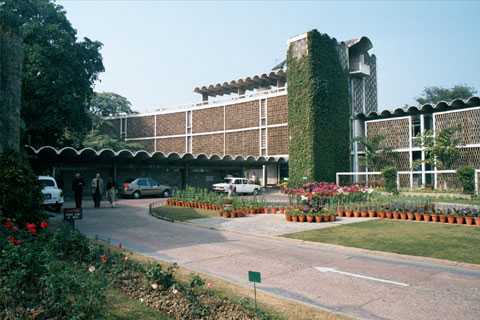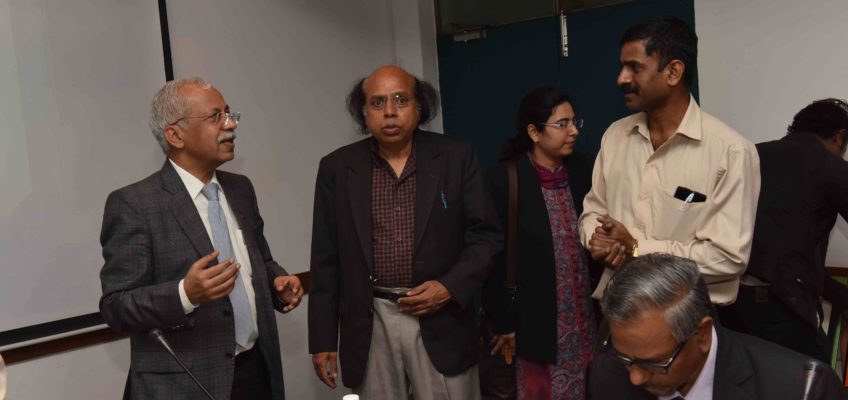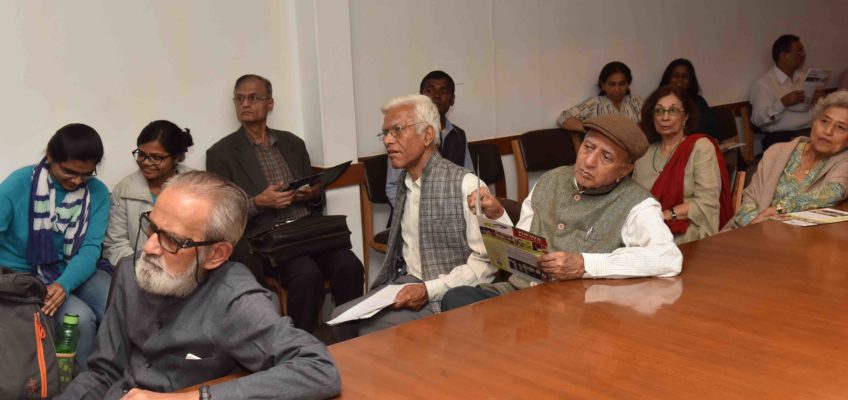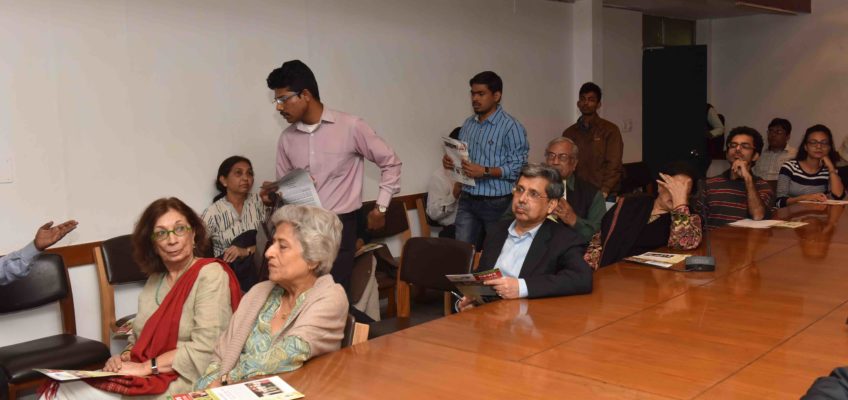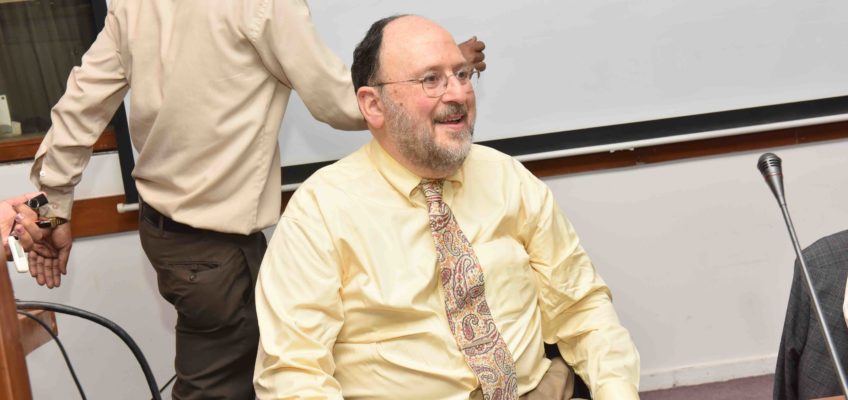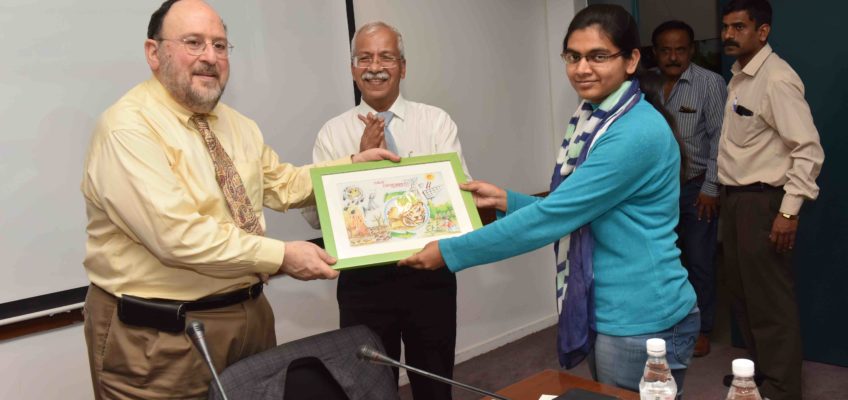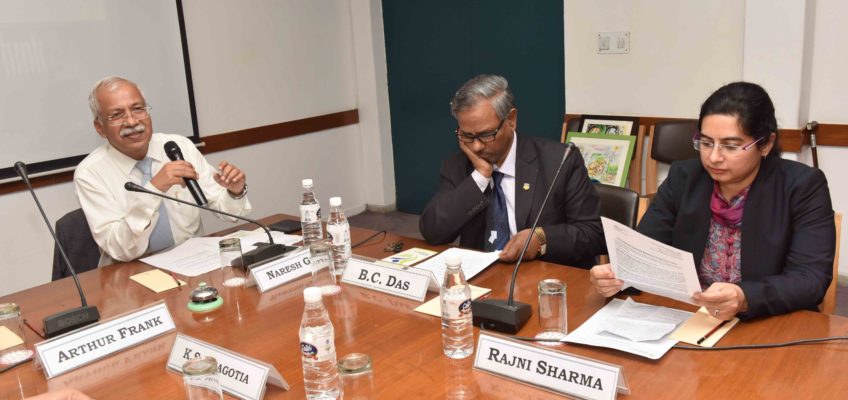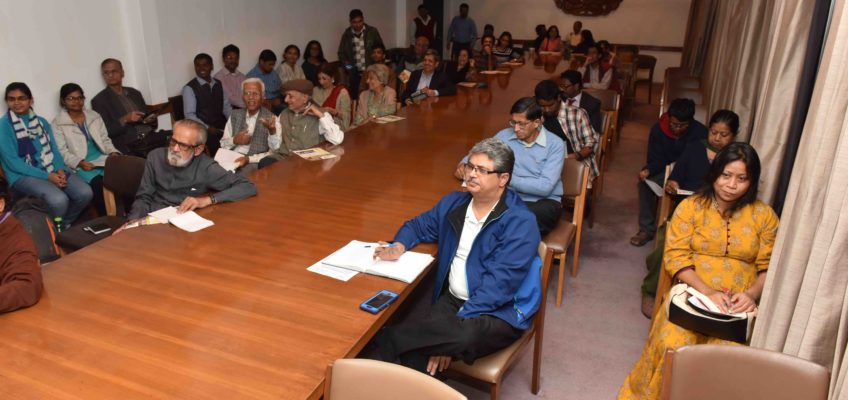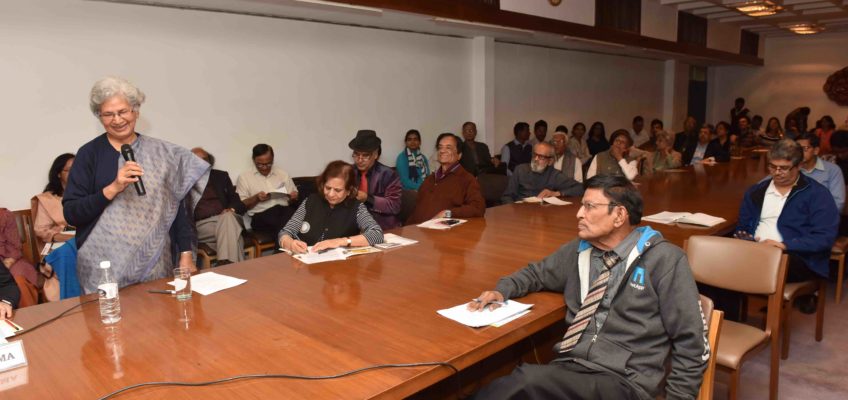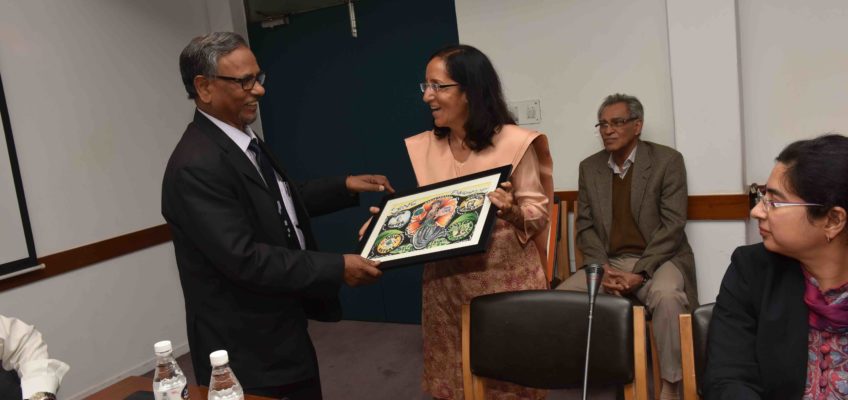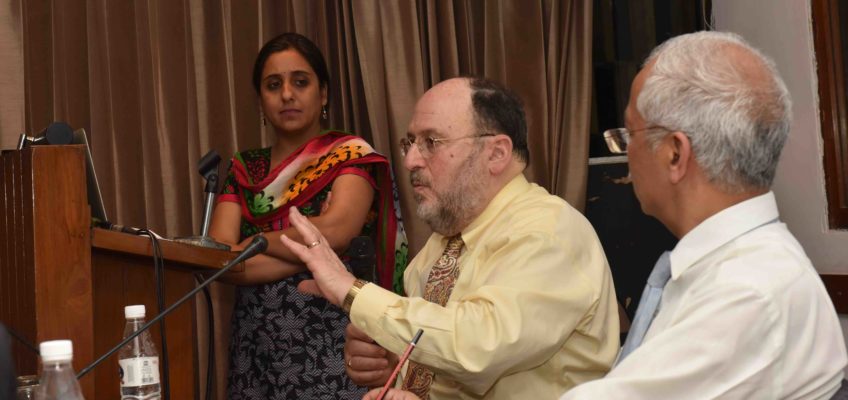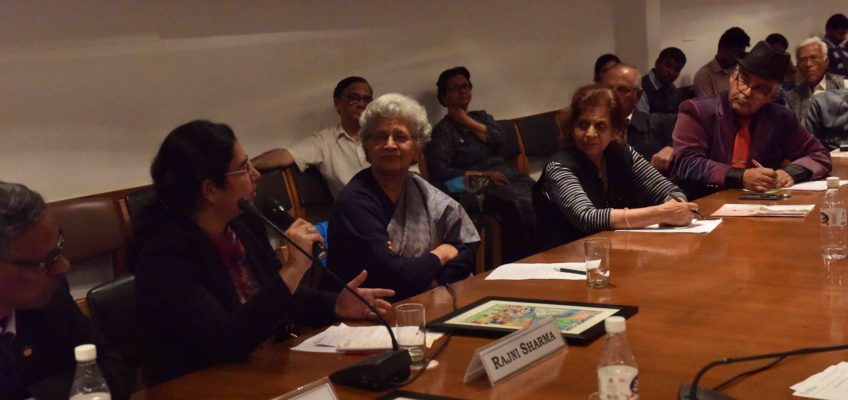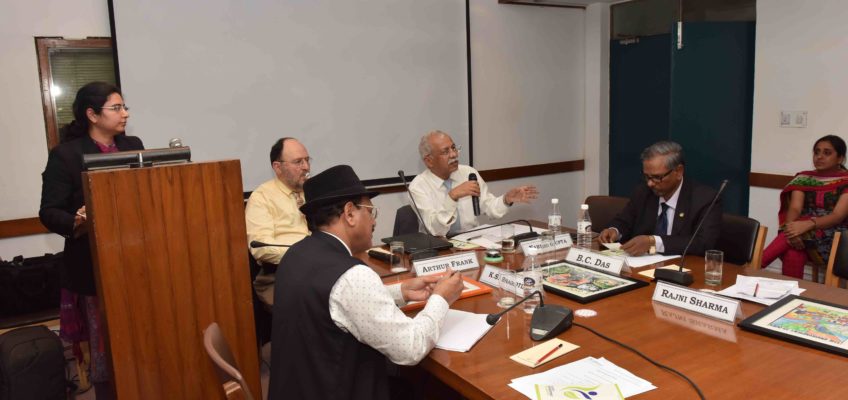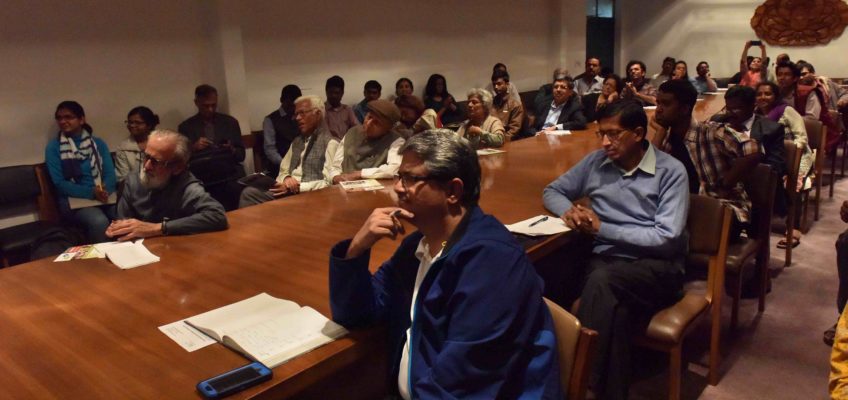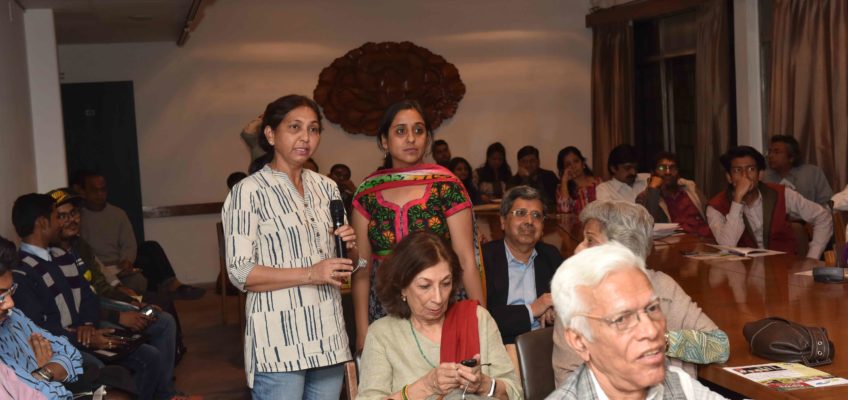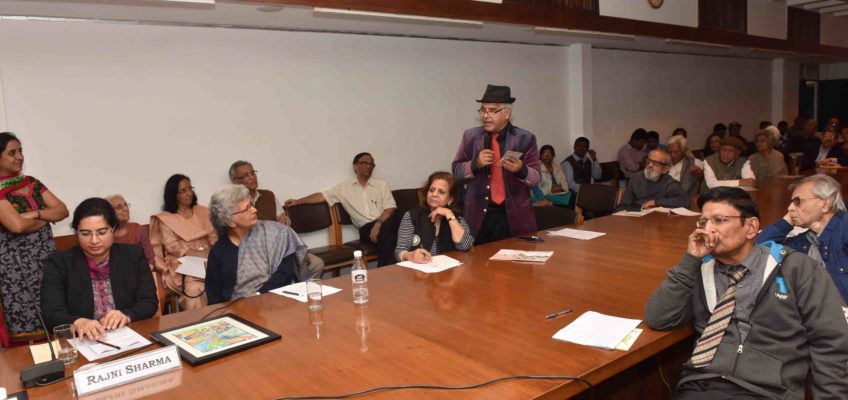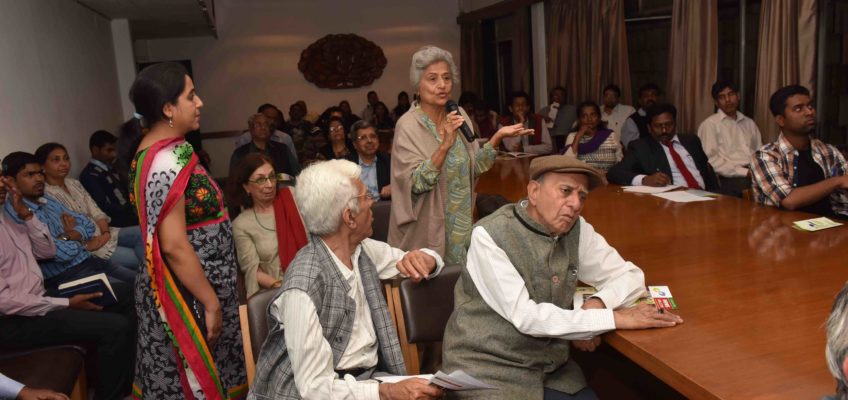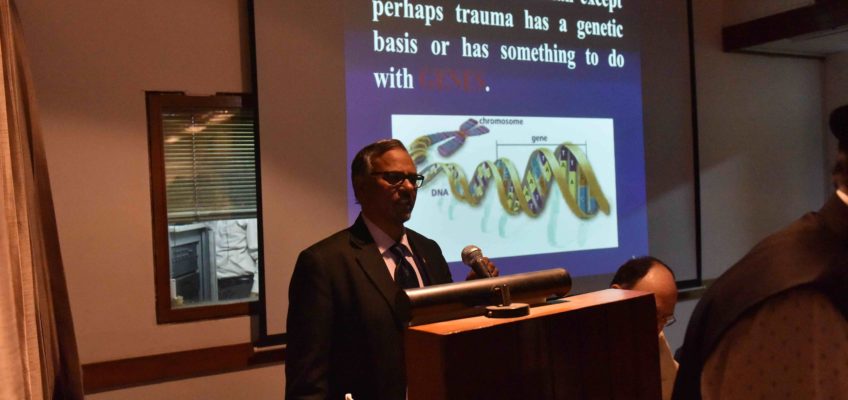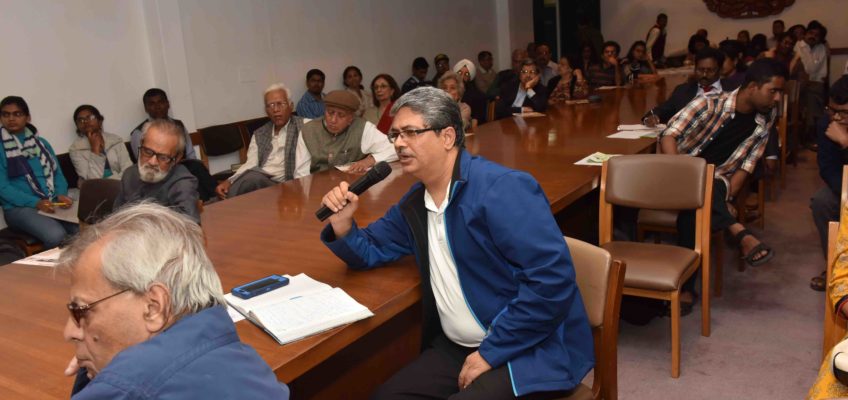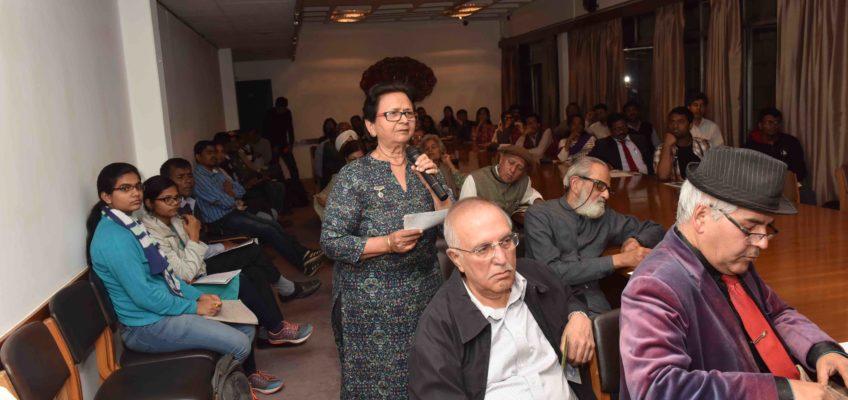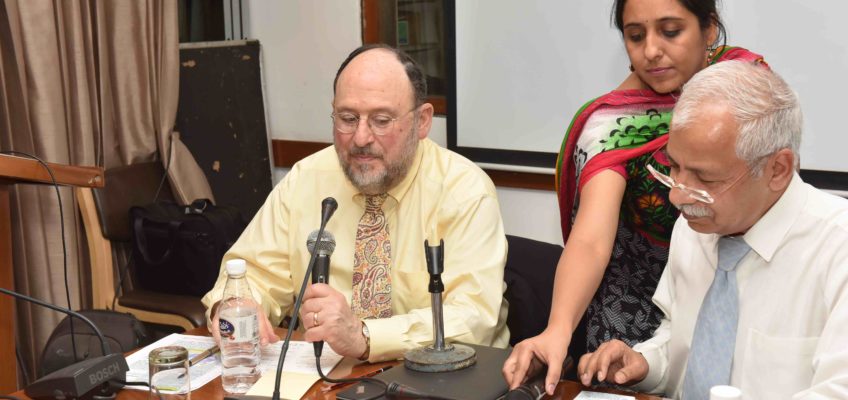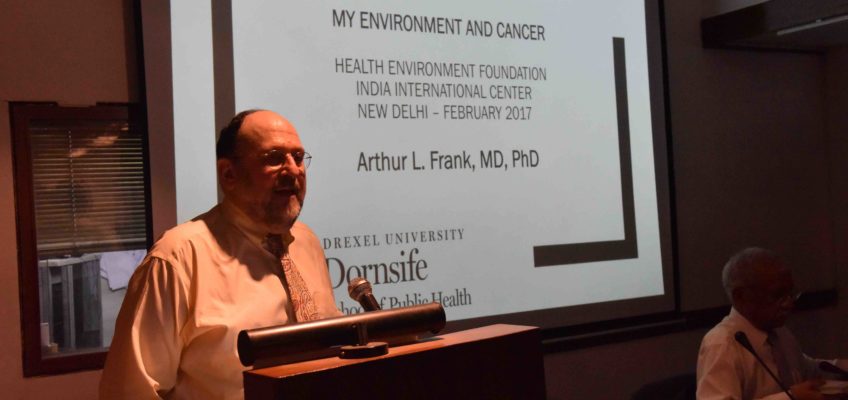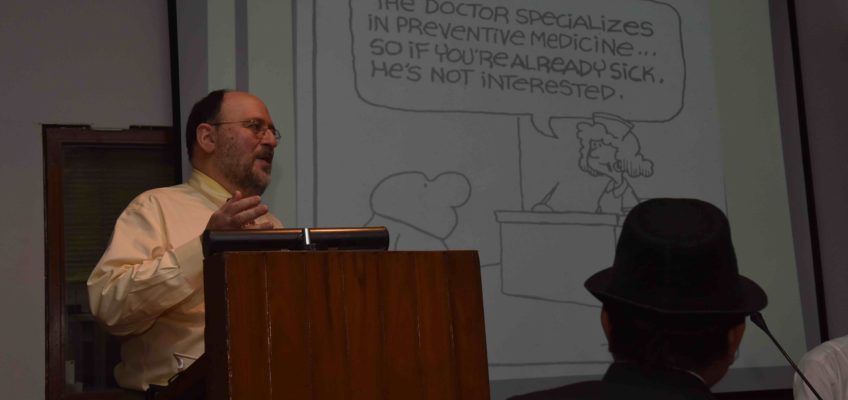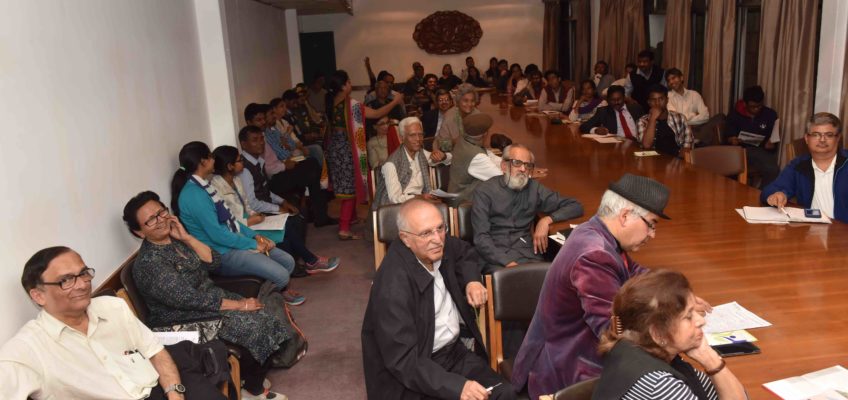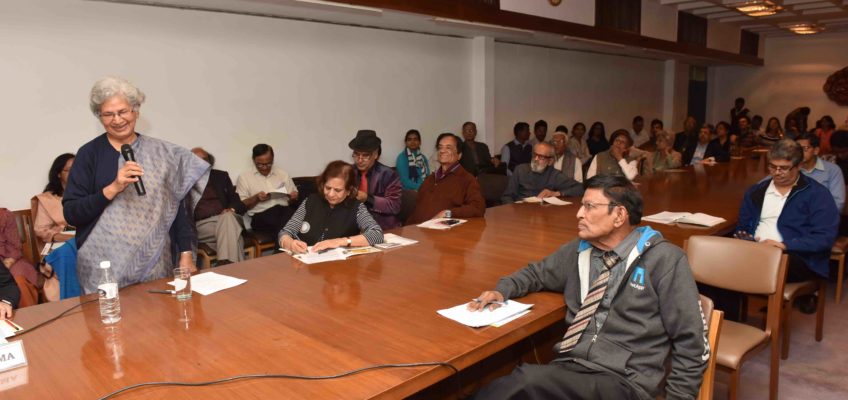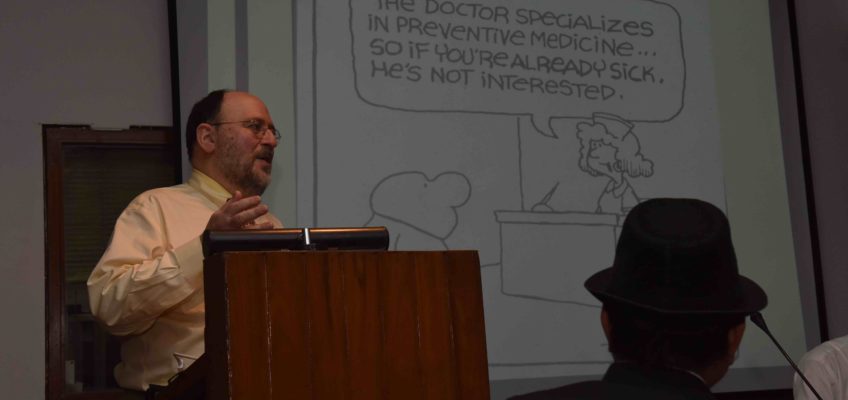IIC- HEC series on Environment and Health
ENVIRONMENT AND CANCER
at IIC, New Delhi under the aegis of
Health Environment Foundation & India International Centre, New Delhi
The 20th February 2017 Panel discussion under the Health Environment Foundation (HEF) and India International Centre (IIC) initiative on Environment and Health Series was focused on ENVIRONMENT AND CANCER, moderated by Dr. Naresh Gupta, Director-Professor, Maulana Azad Medical College, New Delhi and President, Health Environment Foundation. The other panelists included Professor Arthur Frank, Drexel University, School of Public Health, Philadelphia; Prof. BC Das, Chairman, Amity Institute of Molecular Medicine & Stem Cell Research; Prof. Rajani Sharma from AIIMS, New delhi; and Dr. KS Bhagotia, CMO (SAG), environment expert from Delhi Govt. Prof. Arthur delivered the initial keynote presentation and was followed by all others.
It emerged that:
Cancer is an unregulated growth of body cell which has an autonomous control, thereby leading to an ever expanding pool of cancerous cells at the expense of hampering the growth & survival of normal cells in the body. Under normal circumstances, the cells in the body have limited life-span (varying from tissue to tissue) and thus require a regular replacement for maintaining the life functions.
This replacement is under the control and directions of DNA situated deep inside the cell’s nucleus. It is largely self-regulated system, with a servo-control. This involuntary provision is self protective.
The nucleotide building blocks of DNA create different sets of combination patterns to regulate the production of different controlling proteins (enzymes) in the body. The creation of these complex patterns, at times several thousand base pairs long, can get adversely affected by external influences. Even one single misfit in this long complex pattern can be disastrous to life, and may become the prime culprit in causation of CANCER in human body. The corresponding change in the normal DNA Code is called the MUTATION. Thus Mutagenesis and Carcinogenesis are related. And it is not difficult to extrapolate that theses genetic changes would also affect the unborn baby in the womb by creating bodily defects called Teratogenesis.
Cancer may be caused from changes in genetic DNA or changes in the environment. Infrequently, some inherited genetic mutations may pose risk of cancer. The environmental change is a factor in more than 90% of cancer cases, whereas primarily internal genetic factors are responsible for probably fewer than 10% of cancers.
The external influences for Cancer are many, ranging from naturally occurring radiations and other exposures to anthropogenic agents. Over 100 of environmental carcinogens have been classified as GROUP I carcinogen by IARC, International Agency for Research on Cancer.
Remember,
the only safe level of enviornmental carcinogens is ZERO exposure!
These carcinogenic influences can be:
- Naturally Occurring (in the Environment)
- Lifestyle related
- III. Chemicals at Home and/ or Workplace (Inadvertent exposure)
- Drugs / Chemicals consumed knowingly
- Pollution of Environment
The environmental carcinogens have rather broad unregulated exposures with no boundaries and take an extremely long time running in years to trigger the cancer development (20-year rule), thus making it difficult to get a clear cause-effect relationship similar to short term medical diseases like malaria, tuberculosis. At the same time, because of widespread population exposures, the risks even if small will translate into huge costs. The industry also manipulates the division in scientific community on a straitjacket proof, thus delaying preventive measures affecting their profits.
In fact, the industry succeeds delaying even for a proven natural environmental carcinogen like asbestos, with largest consumptions in India and China- 25% and 50% of the world consumption.
Environmental carcinogens include
a) Infectious agents: About a fifth of all cancers cases in the world are attributed to infections by Viruses, Bacteria, and Parasitic organisms. This has been exploited by scientists in creating vaccines to prevent Cancer- a vaccine against HPV (Human Papilloma Virus) prevents a very common cancer of Cervix in women.
b) Ultraviolet Rays are known to be damaging to mankind. The naturally occurring ultraviolet rays (from sun) are warded off by the ozone layer high up n the environment. Any breach, as was shown in Australian skies, may lead to increased cancers of the skin. Hence the beneficial role of the ‘Sunscreens.’
c) Ionising Radiations are another set of agents with propensity to damage DNA and hence cause cancer. Ionising radiations come from X-rays, gamma rays and radioactive materials- either for medical use or from natural sources. In medical practice, their use is stringently regulated. Still the balance of immediate benefit and risk of cancer may overlap.
d) Radon is a radioactive gas and one of best studied environmental carcinogen. It has no colour, no smell and found in outdoors as well as indoors with highest levels in the basements. It is found in soils and rocks , and linked to lung cancer.
e) Smoking: According to a recent research from the American Cancer Society, nearly 1 in 3 cancer deaths can be attributed to smoking, with 29% of the 167,133 cancer deaths in 2014 attributable to cigarettes. Further, researchers noted that smoking can directly cause 12 types of cancer: acutemyeloid leukemia, and cancers of the oral cavity and pharynx, esophagus, stomach, colorectum, liver, pancreas, larynx, trachea, lung, and bronchus, cervix or uterus (for women), kidney and renal pelvis, and bladder.
One should not undermine risk from passive smoking, a form of send hand smoking in the vicinity of smokers.
It poses as much risk from exposure to thousands of dangerous chemicals.
f) Asbestos: Another lung cancer environmental carcinogen (vide supra)
g) Air Pollution: Diesel Exhaust in environment has been classified as Group I carcinogen, meaning there is best scientific evidence for it. It also causes lung cancer, and ranks with the smoking as Group I carcinogen by the IARC, International Agency for Research on Cancer. The vehicular emissions from trucks, buses, heavy carriers, ships, trains, aeroplanes, tractors, other diesel generators and equipments in construction & farming emit these cancer causing environmental pollutants. Higher the exposure, higher the risk of cancer.
Interestingly, the role of environment in cancer came to light from the observation by Sir Percivall Pott in 1775 of the prevalence of squamous cell cancer of the skin of scrotum in the Chimney sweeps.
It was the first reported form of occupational cancer.
After recognition, its prevention was only a matter of time.
h) Chemicals: A large number of chemicals are carcinogenic, many with everyday exposure. Benzene has been linked to blood cancers, and present in vehicular exhaust, cigarette smoking, industrial emissions and even consumer goods. Tetrachloroethylene, used in dry cleaning, is a chemical carcinogen. Arsenic is another chemical with cancer causing potential and found in well waters. The carcinogenic Vinyl chloride, discovered in 1833, was polymerised to make PVC, polyvinyl chloride, in 1838. Its use rose exponentially. DRUGS including hormones and immunosuppressives, inter alia, also run the risk of causing cancers in patients receiving them for long duration.
i) Consumer products: Many of the cosmetics, beauty products, and agents used in everyday food consumables carry in small amounts chemicals that are known to be carcinogenic.
According to Canadian Cancer Research Society, majority of cancers can be attributed to environmental pollution and preventable to some extent as indicated below:
Risk factors % cancers related to risk factors Prevention Strategies
- Tobacco use 25 – 30 % Quit tobacco use
- Being overweight or obese 10 – 20 Choose a healthy lifestyle
- Low fruit and vegetable intake 30 – 35 % Increase daily fruit and vegetable
- Viruses HPV and hepatitis B 15 – 20 % Have responsible sexual relations
Vacciante against HPV and HBV
- Alcohol use 4 – 6 % Reduce alcohol consumption
{10 – 15 %}
- Urban air pollution Reduce car usage
Use public transportation
Reduce your ecological footprint
Exposure to sunlight Avoid the sun in the middle of the day
Use sunscreen at least SPF 50
Lack of physical activity Engage in regular physical activity
Cancer Screening programmes that have proved effective:
- PAP smear in women for genital cancer of Cervix
- Breast Self-Examination for breast cancer
- Testicular Self-Examination
- Stool test for occult blood for cancers of the gut
- May be X-ray chest in persons at risk
Interesting comments that came up from audience included:
“Cancer is not a disease alone, it is a business”
“Since immunity is important, boosting it may help.
This may be best achieved with a holistic approach to body, mind and soul”
Best Wishes!
Naresh Gupta, M.D.
President,
Health Environment Foundation
hefoundation1@gmail.com
